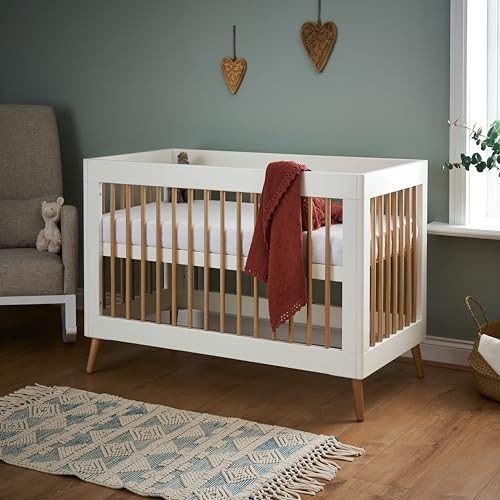Baby Cot To Bed Strategies That Will Change Your Life
Transitioning from Baby Cot to Bed: A Comprehensive Guide for Parents
The journey from a baby cot to a bed marks a significant turning point in a kid's development. It represents independence and an action towards growing up. However, this shift can often be intimidating for both moms and dads and kids. Understanding the procedure, the right timing, and how to make the shift smoother can significantly assist in this journey. This short article checks out the basics to think about when transitioning your child from a cot to a bed, consisting of typical FAQs, ideas, and a structured strategy to ensure the process is as smooth as possible.
Why Transition from a Cot to a Bed?
Developmental Milestones
Transitioning to a bed is generally prompted by a number of aspects:
Physical Growth: As children grow, they outgrow their cots. The average size for a convertible cot is generally indicated for infants as much as 3 or 4 years old.
Cognitive Development: As young children become more curious and familiar with their surroundings, they may attempt to climb out of their cots, posing security threats.

Potty Training: Once a kid is potty trained, they might require much easier access to the restroom, which a bed can facilitate.
Siblings: The arrival of a brand-new brother or sister can likewise require this transition, as the cot may need to be freed up.

When to Make the Transition
There is no one-size-fits-all response to when a child must shift from a small Cot beds to a bed. However, here are some signs that it may be time:
- Climbing Out: If the kid is attempting to climb out frequently.
- Age Consideration: Many professionals suggest this shift around the age of 2 to 3 years, although every child is unique.
- Need for Independence: Children might express a desire for a big-kid bed.
Types of Beds Suitable for Toddlers
Not all beds are developed equivalent when it comes to young kids. Here's a breakdown of appropriate bed types:
| Bed Type | Description | Pros | Cons |
|---|---|---|---|
| Young child Bed | Smaller, lower to the ground, often with side rails. | Size-appropriate for young children; stability. | Minimal life-span as they outgrow quickly. |
| Single Bed | Standard size bed indicated for older children. | Lasts longer; can be used for many years. | Might be too big for a young child; danger of falling. |
| Convertible Crib | Crib that changes into a young child bed. | Versatile; conserves cash in the long run. | Can be pricey; some may not use full-sized options. |
| Loft Bed | Raised bed with space below for play or storage. | Makes the most of space; enjoyable for kids. | Not ideal for very young kids; safety issues. |
Actions to Transition Smoothly
Transitioning to a bed can be simplified with careful planning. Here's a detailed guide:
1. Prepare the Space
- Select a Location: Decide where the bed will be positioned.
- Childproof the Room: Since young kids are naturally curious, ensure that furnishings is stable, sharp edges are covered, and hazardous items are out of reach.
- Keep Familiar Items: Retain preferred toys and bedding to offer convenience in the new environment.
2. Introduce the Bed
- Include Your Child: Let your kid aid choose their bed or bed linen to develop excitement.
- Explain the Transition: Make them comprehend that they are becoming a huge kid by having a big-kid bed. Use motivating language.
3. Make the Swap
- Bedtime Routine: Keep the bedtime regular constant. This creates familiarity and convenience throughout the transition.
- Support: Offer them reassurance however prevent being overly protective; it's important to motivate independence.
4. Address Fears and Concerns
- Discuss Fears: Children may have fears of falling or the dark; talk about these openly.
- Enhance Safety: Use guard rails on the bed at first and discuss what to expect throughout the night.
5. Display and Adapt
- Be Patient: It might require time for your child to change completely.
- Stay Consistent: Maintain the nighttime routine, even when troubles develop.
FAQs Regarding Transitioning from Cot to Bed
Q1: How long does the shift from a cot to a bed typically take?
A1: The transition can differ substantially among kids-- varying from a couple of days to a couple of weeks-- as they change to sleeping in a brand-new space.
Q2: Should I buy an unique young child bed?
A2: Investing in a young child bed can make the shift simpler since they are developed with security in mind; nevertheless, if you prefer to go straight to a single bed, that can work too with the best safety procedures.
Q3: What if my kid keeps rising?
A3: This is regular! Motivate them to stay in bed and establish positive reinforcement by rewarding them for remaining in bed through the night.
Q4: Is it fine to shift to a big bed too early?
A4: Transitioning too early can cause sleep disruptions. It's important to evaluate the readiness of the child based upon their signs and development.
Transitioning from a baby cot to a bed is a substantial action for both kids and moms and dads. With thoughtful preparation and understanding of the kid's requirements, moms and dads can make the shift smoother and more pleasurable. By acknowledging when to make the shift, understanding the types of beds offered, and maintaining a consistent routine, parents can minimize worries and foster a complacency for their child throughout this interesting new chapter. Eventually, every child is different, and perseverance is key in making this journey a favorable experience.





